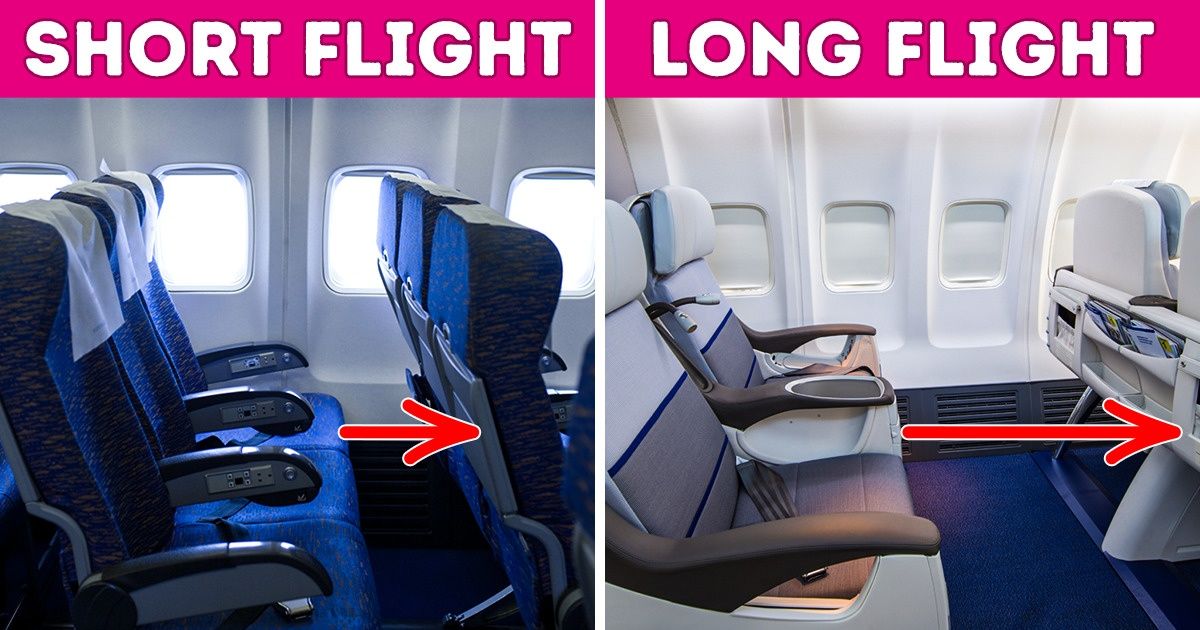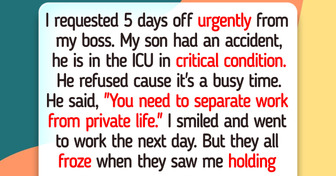15 Times When Expectations and Reality Were as Far From Each Other as Earth and Neptune


Whether you had earphones on or were reading a book the last time you flew on an airplane, make sure to look around more carefully next time you find yourself up in the air. You might pick up on very interesting features known only by frequent flyers or flight crews. It’s no coincidence that you ride a certain type of airplane while on a long flight or that your seat is blue.
Bright Side collected 11 plane-related particularities most passengers are not even aware of.
Next time you fly, whether it’s for a short or long distance, pay attention to the type of aircraft you’re flying on. For longer flights, the airline allocates bigger and more spacious airplanes. For example, an Airbus 350 has straighter cabin floors and side walls than you’d find on other aircraft. Thanks to that, passengers have more head and shoulder space.
If you have a long-distance flight, the airplane allocated for that particular flight is likely configured exactly for longer periods of sitting down. Let’s continue with our example of an Airbus 350, which usually does long-haul flying. Here, the spaces between the seats are way more generous, and even the cushions are of better quality. Besides more legroom, there is also more space between the armrests.
Besides the Airbus 350, there’s another popular type of plane for long distances, and that’s the Dreamliner or a Boeing 787-9. In both of these, the air in the cabin is much more humid due to a special ventilation system. As a result, your skin and eyes don’t feel as dry as they would if you were to fly in another airplane. The air circulates inside the cabin every 3 minutes on average.
Speaking of the Dreamliner, on this particular airplane, the windows are 30% bigger compared to those on similar aircraft. Moreover, they don’t have plastic shades, and each passenger has an electronic dimmer next to their seat. Flight attendants can lighten or darken the shades automatically.
Not all airplanes have built-in screens on the backs of the seats. The airplanes covering short to medium distances are less likely to have all types of entertainment in the cabin, and some companies try to allocate for these planes without screens on the seats. If you have a longer flight, then you’ll probably benefit from inflight entertainment, consisting of movies, TV series, and music.
Don’t know exactly where to book your seat next time you fly? Well, according to studies, having a seat in the back of an airplane makes it 40% more likely that you’ll survive in a plane crash. Wondering between a window or aisle seat? This is a personal choice, but if you know you go to the toilet often, try booking an aisle seat out of respect for your fellow seat neighbors.
We’ve all probably heard somebody sneeze or cough while on an airplane. If that person is close to you, reach your arm to the panel above your head and open the air vent. Direct its flow toward yourself. This way, it will work as a shield, blowing away germs. The cabin air circulates every few minutes anyway.
Having jet lag may be quite unpleasant, but if you’re flying from New York to London, for example, you should not be worried. Your body adapts easier to flying to the east rather than the other way around. You might actually experience weight loss. And you might also arrive earlier because planes fly faster from west to east thanks to the high-speed streams of air.
You’ve probably wondered why your airplane doesn’t land immediately after it reaches its final destination. There are cases where planes circle around particular airports for a little while longer. This usually happens when the landing was not a success, or there are too many planes on the runway — yes, they also have traffic jams and rush hours. Or there may be something on the runway and the ground staff is taking care of the issue.
There’s a big reason why seats on most aircraft are blue. This particular color is meant to calm you down and help you relax. And they’re also easier to be kept clean. Red is known to make people aware of danger and think of traffic stop signs, for example. And in an airplane, there are a lot of people flying for the first time or that are scared of being up in the air.
Next time you receive your boarding pass, take a closer look at it. Besides the information about your name, destination, seat, and row number, there is also a very big letter displayed. It stands for the class you chose. A and F mean first class, for example, J means business class, Y stands for economy class, and P is for premium economy.
What have you learned today from our article? Were you surprised by any of these flight details?











